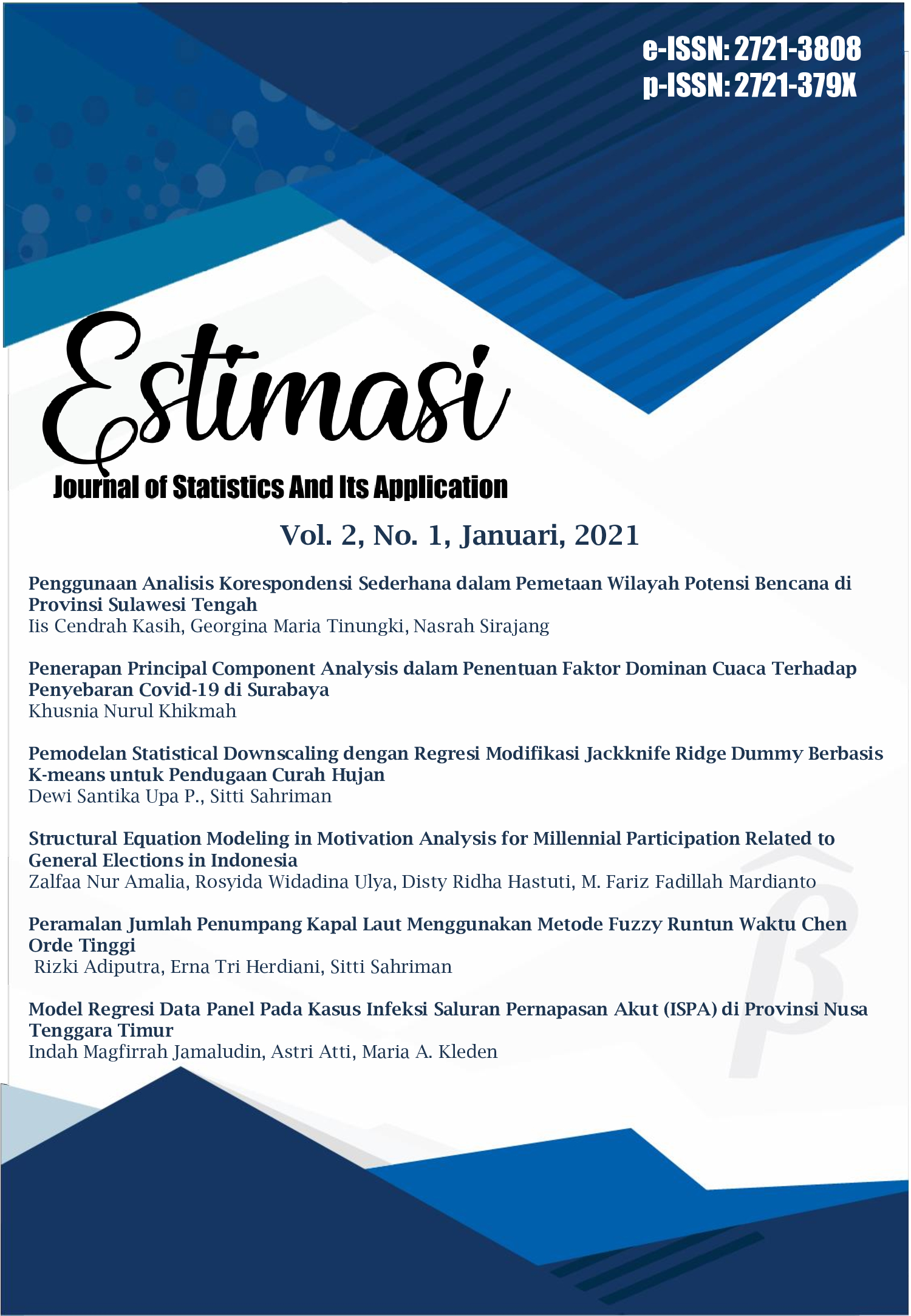Peramalan Jumlah Penumpang Kapal Laut Menggunakan Metode Fuzzy Runtun Waktu Chen Orde Tinggi
DOI:
https://doi.org/10.20956/ejsa.v2i1.10328Abstract
The port has become an important part of people's lives. On certain days there is an increase in the number of ship passengers which can slow down operational activities from the port, thus causing a buildup of passengers at the port. therefore, the port must be prepared to deal with the buildup of passengers at the port. Based on this, the researchers made a prediction or forecasting the number of ship passengers at Makassar Soekarno Hatta Port in the coming period to find out how much the estimated number of passengers at Makassar Soekarno Hatta Port. The results of these studies can be input to the PT. Pelabuhan Indonesia IV (Persero ) Makassar if there will be a surge in passengers in the future period. researchers used the fuzzy method of high order chen time series in forecasting or prediction in this study . The researcher divides the data onto training and testing data . The results of the study using fuzzy time series with the best high order chen are that the second order produces MAPE error size of 0,143 , MSE 13470993,9 and MAE of 9478,52 . The result of prediction of testing data onto one period in the future is 52.608.
References
Heizer, Jay dan Render, Barry. 2009. Manajemen Operasi, Buku 1 Edisi 9. Jakarta: Salemba Empat.
Dewi, U. 2012. Model Exponential Generalized Autoregressive Conditional Heteroscedasticity (Egarch) Dan Penerapannya Pada Data Indeks Harga Saham (Studi Kasus Pada Saham Pt. Antam (Persero) Tbk). S1 Thesis, Universitas Negeri Yogyakarta.
Berutu, S. S., 2013. Peramalan Penjualan Dengan Metode Fuzzy Time Series Ruey Chyn Tsaur. Tesis, Universitas Diponegoro, Semarang.
Makridakis, S. dan Wheelwright, S. C. 1999, Metode dan Aplikasi Peramalan. Jakarta: Binarupa Aksara.
Supranto. 2001. Statistik teori dan aplikasi. Erlangga: Jakarta.
Lutvia, C. R., Dian, A., Ahmad, K. 2019. Fuzzy Time Series Saxena-Easo Pada Peramalan Laju Inflasi Indonesia. Jurnal ILMU DASAR, Vol. 20, No. 1
Chen, S.M. 2002. “Forecasting Enrollments Based on High-order Fuzzy Time Series”. Cybernetics and Systems 33, 1:1-16.
Putra, N. A. 2017. Prediksi Jumlah Penduduk Menggunakan Fuzzy Time Series Model Chen (Studi Kasus: Kota Tanjungpinang). Jurnal Skripsi. FT UMRAH.
Fauziah, N., Sri, W., Yuki, K. N. 2016. Peramalan Mengunakan Fuzzy Time Series Chen (Studi Kasus: Curah Hujan Kota Samarinda). Jurnal Statistika. Vol. 4, No. 2, Hal 52-61.
Song, Q. dan Chissom, B.S. 1993. Forecasting enrollments with fuzzy time series part II, Fuzzy Sets and Systems, 1-8.
Cheng, C. S. dkk. 2008. Fuzzy time-series based on adaptive expectation model
for TAIEX forecasting. Expert Systems with Applications. 34 : 1126 – 1132
Indriyo, G., & Najmudin, M. (2000). Ramalan Metode Rata-Rata Bergerak Berganda. Yogyakarta: BPFE.
Downloads
Published
Versions
- 2021-05-15 (5)
- 2021-01-15 (4)
- 2021-01-15 (3)
- 2021-01-14 (2)
- 2021-01-13 (1)
Issue
Section
License
Copyright
It is the author's responsibility to ensure that his or her submitted work does not infringe any existing copyright. Authors should obtain permission to reproduce or adapt copyrighted material and provide evidence of approval upon submitting the final version of a manuscript.


